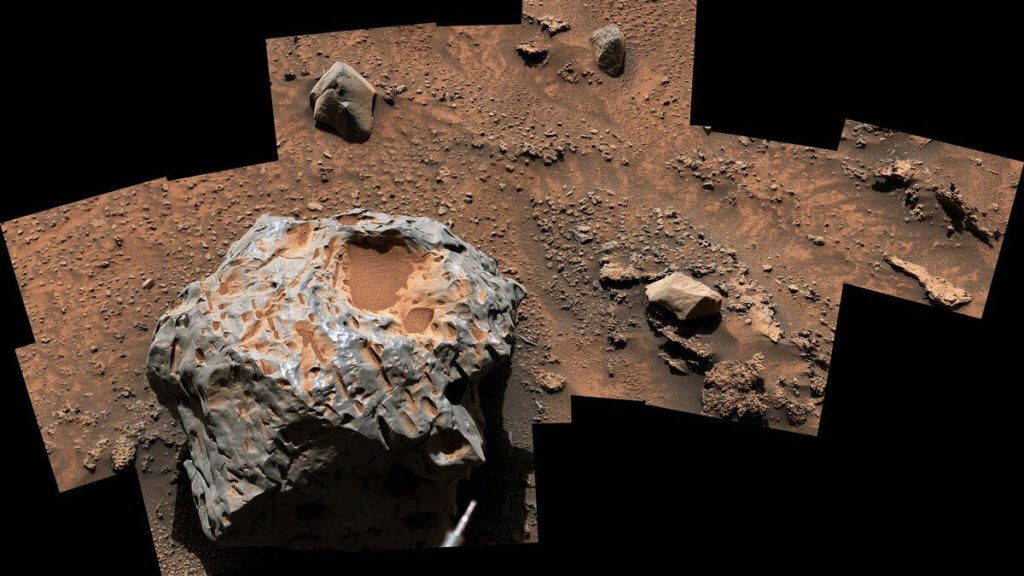After more than a decade on Mars, NASA‘s Curiosity rover is quite used to traversing the Red Planet in solitude.
But last week, on its 3,724th Martian day rumbling over Mount Sharp, it encountered another foreign visitor, something that also traveled an extraordinary distance through space before winding up in the dusty barren desert: a one-foot-wide meteorite.
NASA is calling the space rock Cacao(Opens in a new window), one of a handful of meteorites the plucky robot has discovered since it arrived on Mars in 2012. Using its Mast Camera, Curiosity snapped a photo showing its new find on Jan. 27, with its own Johnny-5-like shadow creating a frame. The selfie [see below] has ragged edges because it is actually composed of six images stitched together.
“There’s no way to date these,” NASA said through its anthropomorphized Curiosity account(Opens in a new window) on Twitter. “But it could have been here millions of years!”

Credit: NASA / JPL-Caltech / MSSS
On Earth, scientists estimate about 48.5 tons of billions-of-years-old meteor material(Opens in a new window) rain down from space daily, much of which vaporizes in the atmosphere or falls into the ocean, which covers over 70 percent of the planet. More than 60,000 meteorites have been discovered on our planet. The vast majority comes from asteroids, but precious few originated on Mars or the moon, according to NASA. At least 175 identified here(Opens in a new window) hail from the Red Planet.
“It could have been here millions of years!”
Curiosity, a car-size rover(Opens in a new window), and its predecessors have found meteorites before, and The Meteoritical Society is starting to keep a database of their finds(Opens in a new window). The international organization has given formal name recognition to 15 such specimens since 2005.
Tweet may have been deleted
(opens in a new tab)
(Opens in a new window)
Want more science and tech news delivered straight to your inbox? Sign up for Mashable’s Top Stories newsletter today.
It’s not clear which planet, moon, or asteroid Cacao expatriated, but mission scientists say it’s an iron-nickel meteorite. This class of space rock isn’t rare among those found on Earth, but it is less common than stony meteorites. Other meteorites that rovers have discovered on their expeditions have had similar iron compositions.
Scientists speculate iron meteorites may be resistant to erosion on the Red Planet. That could explain why this big space rock appears to be sitting on flat ground rather than in a hole.
“There likely was a BIG crater in the ancient past,” Curiosity tweeted(Opens in a new window). “Over time, erosion and other forces flatten the area around it, carving away everything but the hardest material.”

